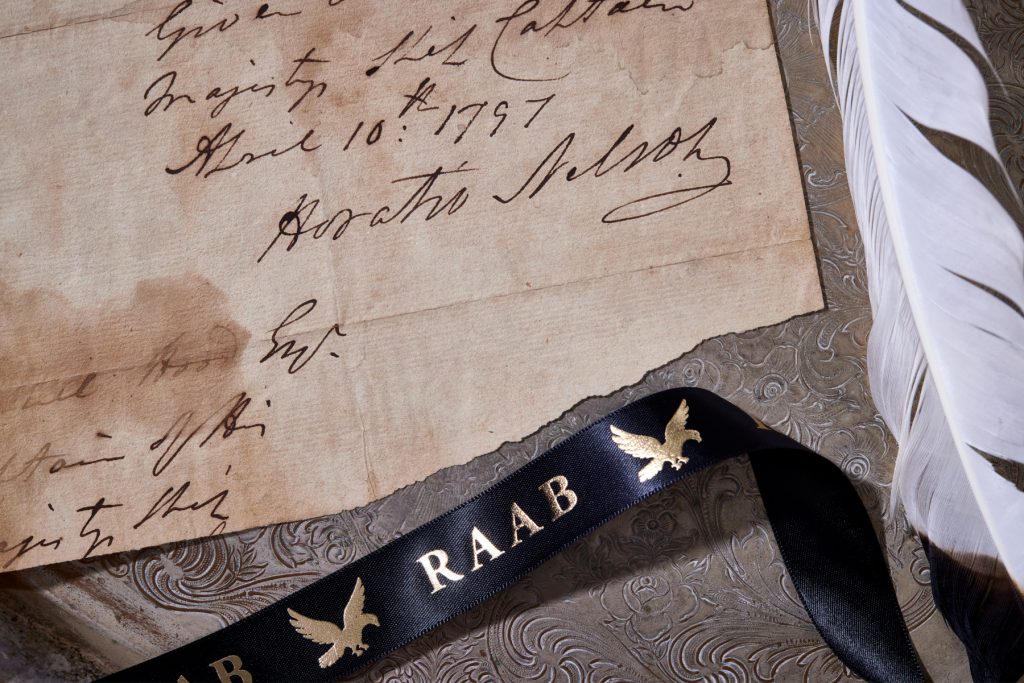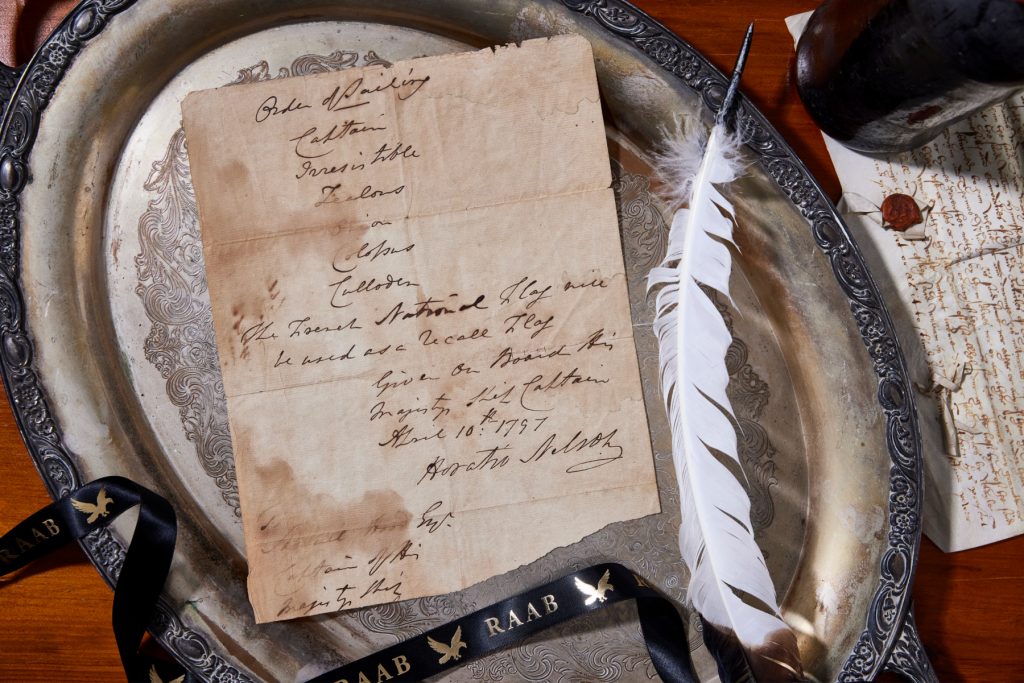Admiral Horatio Nelson Prepares His Fleet for Battle: His Order of Sailing, Written and Sent to His Captain as He Prepared to Meet the Enemy






Just the Second Nelson Order of Sailing we have ever seen
- Currency:
- USD
- GBP
- JPY
- EUR
- CNY
This document was sold by famed autograph dealer Walter Benjamin in 1911
Horatio Nelson is a towering figure in history and perhaps the greatest naval figure of all time. A brilliant tactician, original strategist, fearless fighter and inspiring leader, he reveled in his celebrity, and enjoyed a scandalous extra-marital affair with...
This document was sold by famed autograph dealer Walter Benjamin in 1911
Horatio Nelson is a towering figure in history and perhaps the greatest naval figure of all time. A brilliant tactician, original strategist, fearless fighter and inspiring leader, he reveled in his celebrity, and enjoyed a scandalous extra-marital affair with Emma, Lady Hamilton.
At sea, ‘the Nelson touch’, as it was called, is evident in his strategic memos to his captains. To Nelson, a major part of his strategy was to line his ship’s up in a particular order that he pre-determined. This order of sailing would then be continued into battle, so making the determination of an order of sailing was a major part of his strategic thinking. For example, before the Battle of Trafalgar, he spent the entire forenoon employed in forming the Fleet into the Order of Sailing.
In his memo to his captains before Trafalgar, Nelson specified his plans to keep the order of sailing as the order of battle (in this case keeping the fleet in two columns of 16 ships each) and plans to break the enemy line into two or three sections in order to stand a greater chance of victory). Nelson’s last dispatch read: “At daylight saw the Enemy’s Combined Fleet from East to E.S.E.; bore away; made the signal for Order of Sailing, and to Prepare for Battle…” His Order of Sailing document for Trafalgar is the only one we had ever seen, and it is in a private collection in England, with copies to his captains in public institutions.
Now we have seen another – an extremely rare order of sailing document, as he prepared for battle, this one completely in Nelson’s hand.
In February 1797 the British defeated a Spanish fleet near Cape St. Vincent, mainly because, without orders from his superior Admiral John Jervis, Nelson hauled out of line and attacked the head of the second Spanish division. While the rest of Jervis’ fleet slowly turned and came up in support, Nelson held the two Spanish squadrons apart, at one time fighting seven enemy ships. The Battle of Cape St. Vincent won for Jervis the earldom of St. Vincent and for Nelson a knighthood. But the action failed to strike a solid blow against the Spanish Navy, which somewhat battered, fled to Cadiz in southern Spain. Admiral Jervis was then ordered to subdue and blockade that city. They did, but coastal batteries in Cadiz opened fire, joined by Spanish warships anchored at harbor, and drove the attackers back, causing the British to lose grip over the blockade. In April 1797 Nelson was stationed off Cadiz, ready to attack and on the lookout for French and Spanish squadrons. On April 10, he wrote “I hope soon the good people of England will have something to talk about, more recent victories, for if our ships are but carried close by the officers, I will answer for a British fleet always being successful.” He readied himself for battle, knowing enemy ships were nearby.
Autograph document signed, to Captain Samuel Hood “On Board His Majesty’s Ship Captain,” off Cadiz, April 10, 1797, assigning an order of sailing for his squadron while on lookout for the foe. The document is entitled “Order of Sailing”, listing his flagship, the HMS, Captain, followed by the Irresistible, Zealous, Orion, Colossus, and the Culloden. He adds interestingly that the “French National Flag will be used as a recall Flag.”
Also in April Jervis shifted his gaze to Tenerife in the Canary Islands upon hearing that Spanish treasure convoys from America arrived regularly at that island. The admiral sent two frigates which surprised and caught two French and Spanish vessels in a night-time raid. Encouraged by this success, in July Jervis dispatched a small squadron under Nelson with the aim of seizing Santa Cruz, Tenerife’s capital. In battle there, Nelson was wounded in the arm, which was subsequently partially amputated.
This is a perhaps unique Nelson Order of Sailing in private hands, other than that of Trafalgar which is not on the market.

Frame, Display, Preserve
Each frame is custom constructed, using only proper museum archival materials. This includes:The finest frames, tailored to match the document you have chosen. These can period style, antiqued, gilded, wood, etc. Fabric mats, including silk and satin, as well as museum mat board with hand painted bevels. Attachment of the document to the matting to ensure its protection. This "hinging" is done according to archival standards. Protective "glass," or Tru Vue Optium Acrylic glazing, which is shatter resistant, 99% UV protective, and anti-reflective. You benefit from our decades of experience in designing and creating beautiful, compelling, and protective framed historical documents.
Learn more about our Framing Services

















































































































